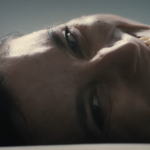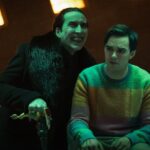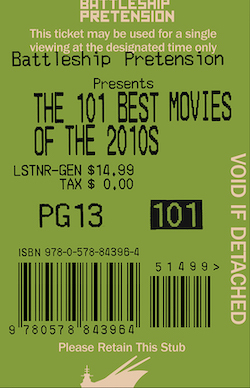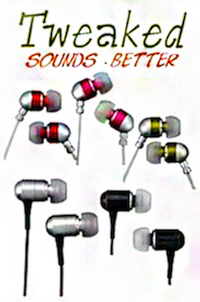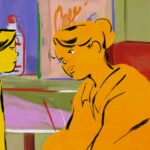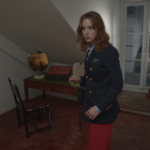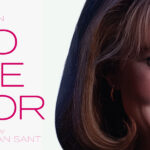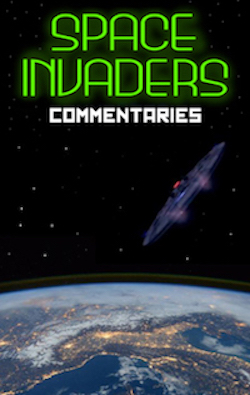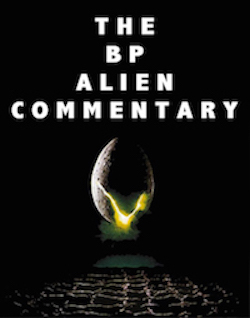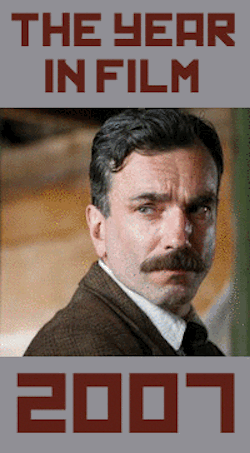Chicago International Film Festival: Dracula 3D, by Aaron Pinkston
Dario Argento is a film figure that has, to a degree, transcended his genre. Though some of his conventions and aesthetic are maybe closer to the current “torture porn” subgenre, his films are loved by both horror fantactics and those drawn more to art films. He’s the breed of genre filmmaker that can make a 3D horror film that premieres at Cannes — there are few people you can say that about. I’ve never been much of a fan of this brand of Italian horror films. I’ve given Bava and Fulci plenty of opportunities to work for me, but it never really has. Argento, however, stands out. His films take the gore effects crucial to the movement and makes them beautiful, but he also creates great mysteries with characters that can build a connection with the audience. That said, I haven’t seen anything Argento has directed since his 1996 film The Stendhal Syndrome, and the word on the street is that I’m not missing much.
His newest film, yet another take on the classic Dracula legend, is now in three dimensions! Dracula 3D sticks pretty closely to the blood-sucking story you know and love, opening up with young Jonathan Harker traveling in a vague European country after taking a job with the mysterious Count Dracula. I’ve seen so many versions of this same story that this iteration can’t get over feeling tired. A visionary genre auteur like Argento should be expected to do a bit more with this well-told story, but he really doesn’t. Sure, he’s ramped up some of the sex and violence inherent in the text (and don’t forget the 3D), but these twists aren’t anything that weren’t done better by Terence Fisher’s Horror of Dracula. Dracula 3D is definitely more reminiscent of the British Hammer films than Argento’s most important work; though that isn’t a criticism, as many of the Hammer films are pretty great, it comes off more as a copy of a copy.
There is a lot to say about the look of this film, both bad and good. The film is treated in a way to fade out the colors of the image, made to look like a film made 30 years ago. This aesthetic fits with the look of the Hammer films, which perhaps makes the connection feel stronger. This particular aspect of the film is successful, perhaps one of the only aspects that really work. The end product is still sharp, in hi-definition, but has a pleasing, warm quality of VHS.
Unfortunately, the film also seems to be employing the computer graphic technologies from 30 years ago. Nearly all of the special effects work here is blatantly and distractingly artificial. By the end there are a few potentially interesting Giallo-style kills, the kind of moments that Argento built his career on, but they are all marred by their fakey graphic nature. Argento’s use of practical effects in films like Suspiria and Deep Red could be chilling, disgusting and beautiful, all at the same time. He never seemed to be restrained by his practical effects, either, with enough creativity to do really sophisticated stuff mixed in with the simple throat slashings and stabbings. His best kills always induced a wonder for how they were done — the effects in Dracula 3D induce a wonder as to why they were done.
The 3D selling point further emphasizes the terrible effects work being done. I’ll admit that I’m not the target audience for 3D, but I often found the use here particularly unsatisfying. There are times where the effect is used in its most classic sense, with sharp instruments jutting out at the screen, but it doesn’t do much else otherwise. Possibly because of a low-grade conversion, the 3D creates a bouncy effect in a lot of scenes that disorients more than anything. The opening titles literally made me dizzy and every time the camera quickly moved it only got worse. From the results of the film, I wouldn’t think that Argento had any input or control over the 3D as is used in the film with the hope that he could have used the technology with more thought.
Dracula 3D is a capital-b Bad Movie. I would describe the energy of most of the film as dull, but I can’t deny that there are a number of clearly unintentional laughs sprung by the acting, dialogue and a few odd moments. One peculiar choice that does happen to stray from any other Dracula tale is that our vampire friend doesn’t merely transform into a bat, but a number of different creatures, including an owl, swarm of flies, beetles, and a comically enhanced grasshopper. There really isn’t much reason for these transformations being different than normal, but they do provide some laughs.
There is probably a time and place, with a particular crowd, where Dracula 3D would be a good time. Argento’s hardcore audience probably won’t have any particular appreciation for the film, which is a bummer. I can really only see this movie finding any legs through people having a great time mocking it, laughing at all its peculiarities without any reverence. This is particularly sad because Argento’s work has built up so much respect. One can only hope that anyone who sees Dracula 3D is aware of the filmmaker’s legitimate masterpieces, that he once showed an ability that makes him truly special.
Note: This film will screen at the Chicago International Film Festival on Saturday, October 19 at 11 pm.




